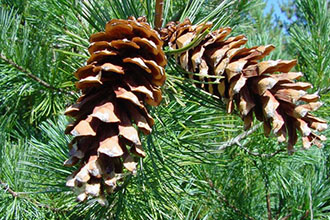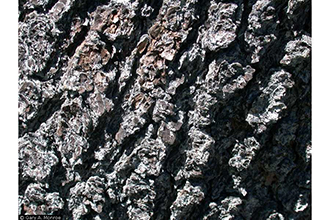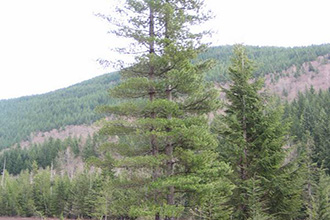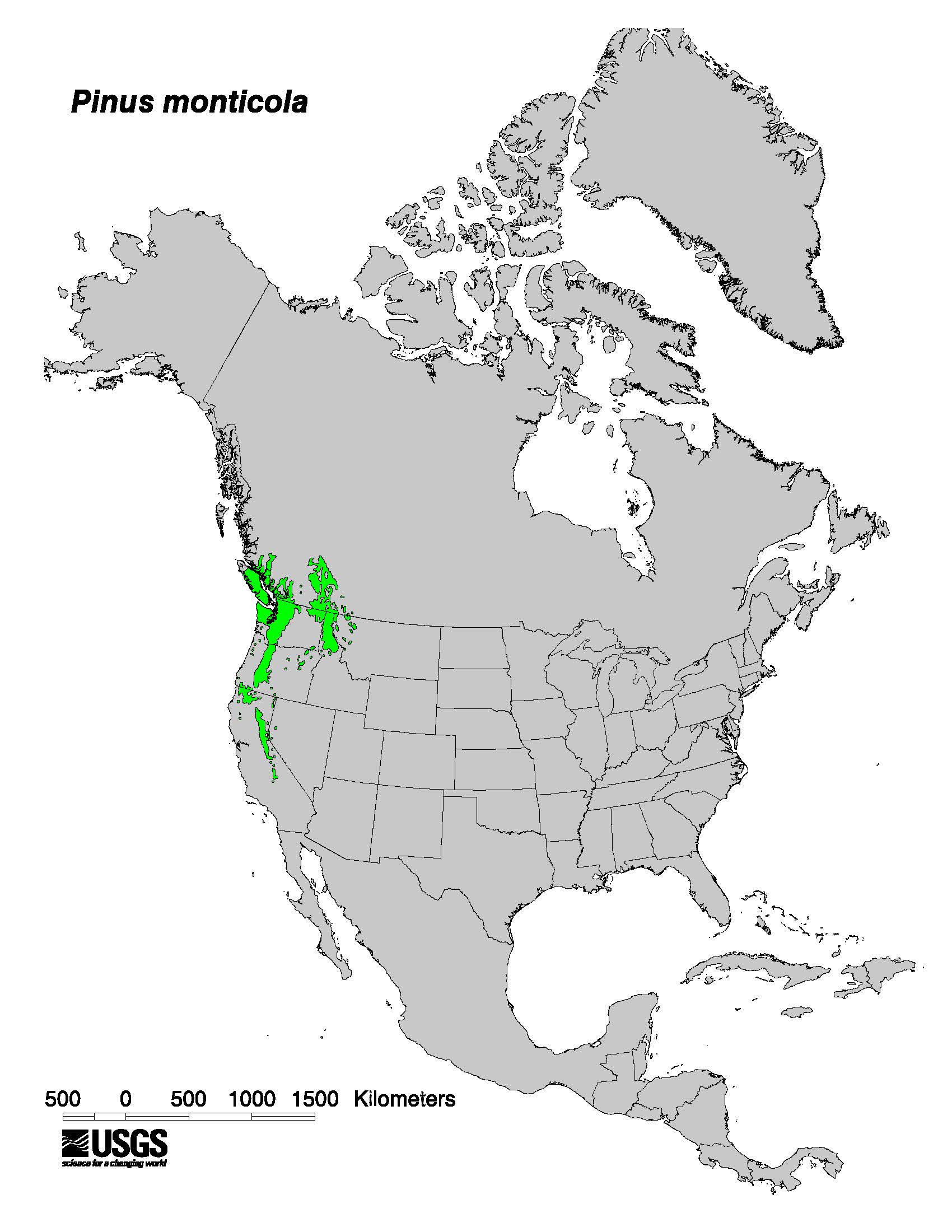Taxonomy: Kingdom - Plantae (plants). Subkingdom - Tracheobionta (vascular plants). Superdivision - Spermatophyta (seed plants). Division - Coniferophyta (conifers). Class - Pinopsida. Order - Pinales. Family - Pinaceae (pines). Genus - Pinus L. Species - Pinus monticola Douglas ex D. Don
Ecology: Western white pine is classified as shade intolerant to very intolerant. It is usually seral to fir (Abies spp.), spruce (Picea spp.), or hemlock (Tsuga spp.). Western white pine is restricted to climates characterized by dry summers and a predominance of winter precipitation. The most extensive and best stands of western white pine are found in the river bottoms and less steep lower slopes of the Priest, Coeur d'Alene, St. Joe, and Clearwater River basins.



